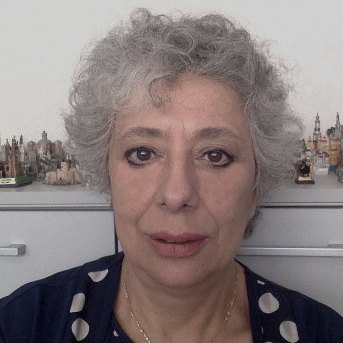Unilateral Neglect Assessment and Rehabilitation
A special issue of Brain Sciences (ISSN 2076-3425).
Deadline for manuscript submissions: closed (31 October 2019) | Viewed by 12438
Special Issue Editors
2. Cognitive and Motor Rehabilitation Unit, IRCCS Fondazione Santa, Rome, Italy
Interests: spatial cognition and memory; human navigation; clinical neuropsychology; neuropsychological rehabilitation; topographical disorientation; developmental topographical disorientation; individual differences and aging
Special Issues, Collections and Topics in MDPI journals
Special Issue Information
Dear Colleagues,
Unilateral spatial neglect (USN) is a frequent and often underestimated cognitive disorder which impairs the recovery of patients with acquired brain lesions.
In recent years, efforts have been directed towards developing new assessment tools and effective treatments, however, shared approaches for the assessment of USN and tailored treatments are still presently lacking.
The aim of this Special Issue is to give an overview of the recent advancements in the treatment of USN and the evaluation of rehabilitation efficacy. We are also interested in studies regarding the effectiveness of traditional or novel treatments on functionality and long-term outcomes, in particular, studies aimed at facilitating the recovery of daily life functioning, or assessing and/or treating selective aspects of USN syndrome.
Prof. Dr. Cecilia Guariglia
Dr. Mauro Mancuso
Guest Editors
Manuscript Submission Information
Manuscripts should be submitted online at www.mdpi.com by registering and logging in to this website. Once you are registered, click here to go to the submission form. Manuscripts can be submitted until the deadline. All submissions that pass pre-check are peer-reviewed. Accepted papers will be published continuously in the journal (as soon as accepted) and will be listed together on the special issue website. Research articles, review articles as well as short communications are invited. For planned papers, a title and short abstract (about 100 words) can be sent to the Editorial Office for announcement on this website.
Submitted manuscripts should not have been published previously, nor be under consideration for publication elsewhere (except conference proceedings papers). All manuscripts are thoroughly refereed through a single-blind peer-review process. A guide for authors and other relevant information for submission of manuscripts is available on the Instructions for Authors page. Brain Sciences is an international peer-reviewed open access monthly journal published by MDPI.
Please visit the Instructions for Authors page before submitting a manuscript. The Article Processing Charge (APC) for publication in this open access journal is 2200 CHF (Swiss Francs). Submitted papers should be well formatted and use good English. Authors may use MDPI's English editing service prior to publication or during author revisions.
Keywords
- Unilateral spatial neglect
- USN
- cognitive disorder
- rehabilitation efficacy







